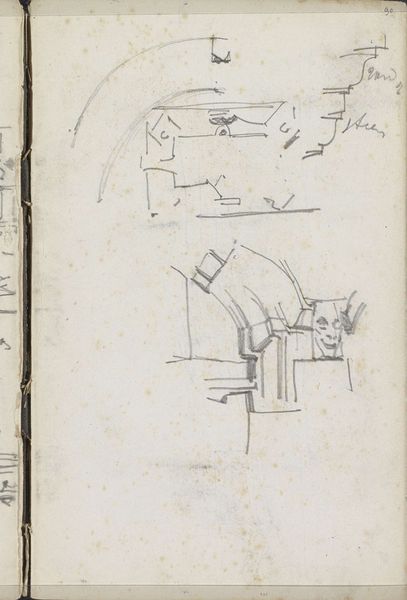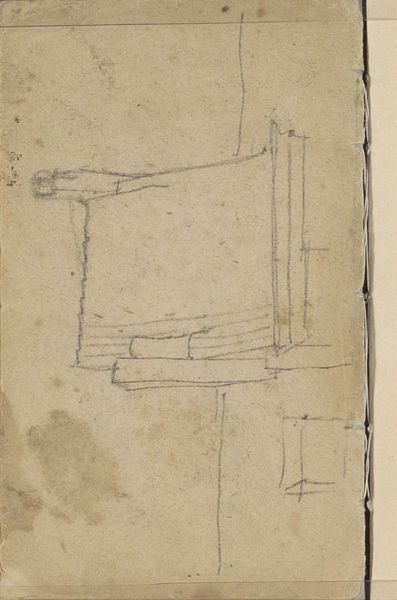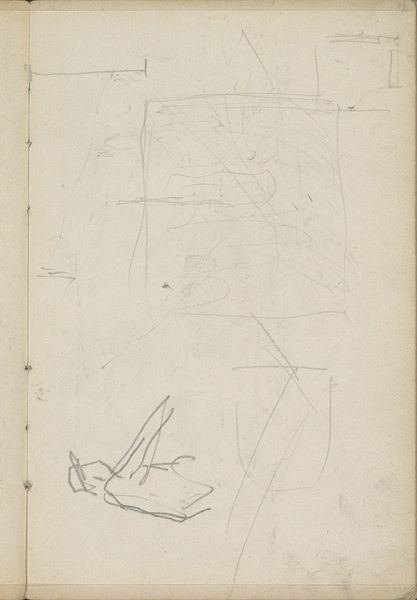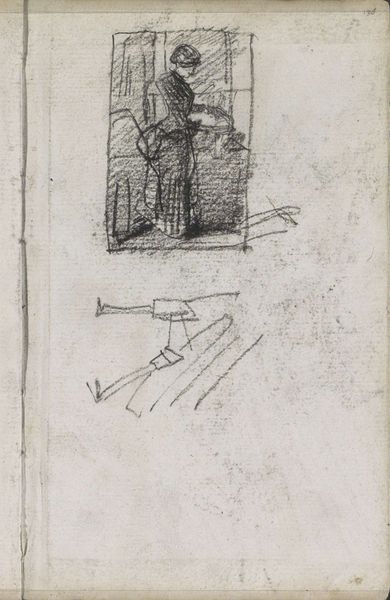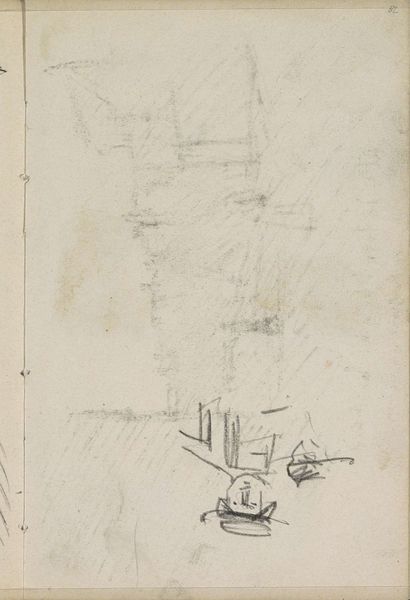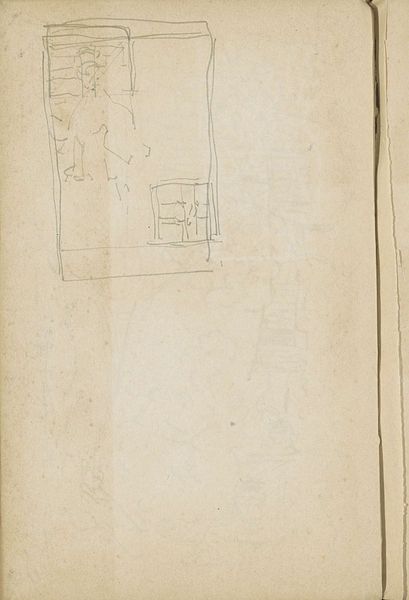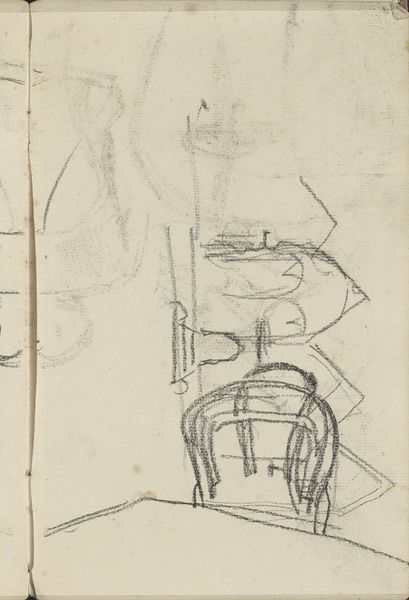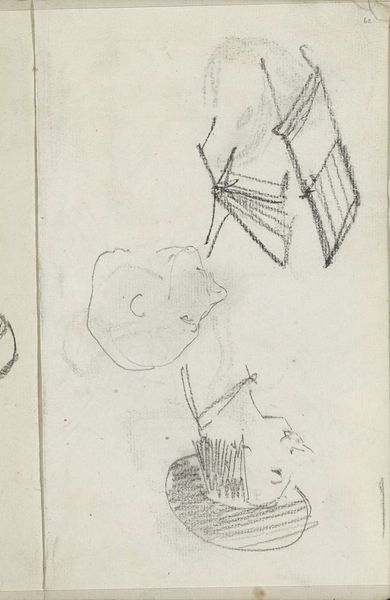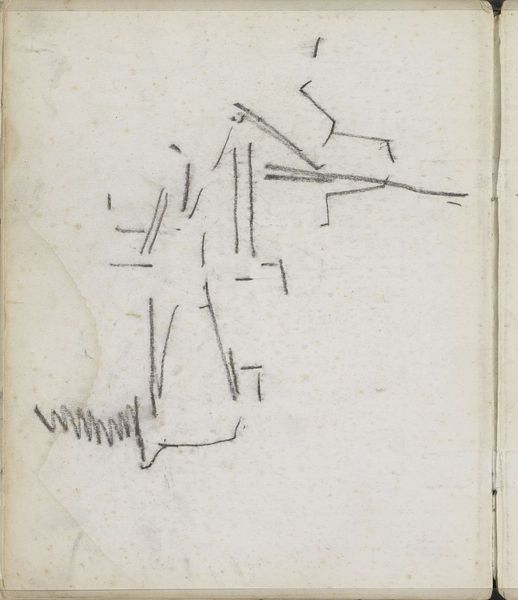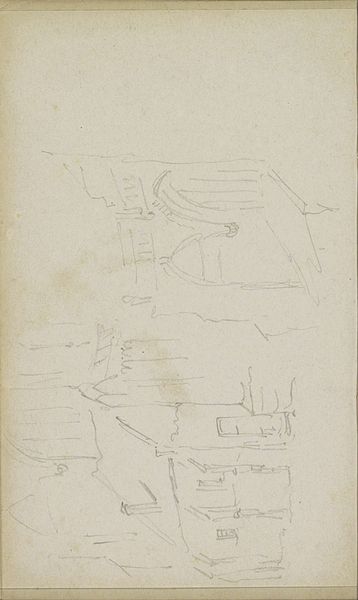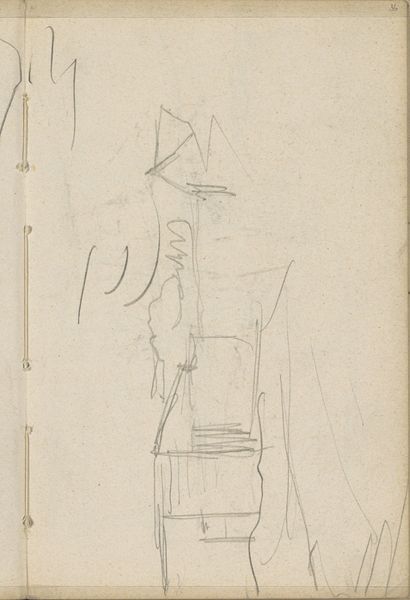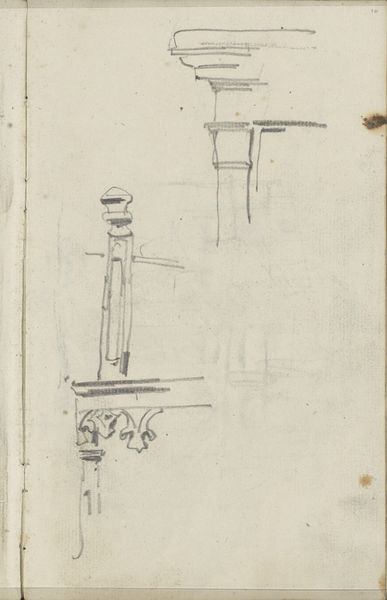
Copyright: Rijks Museum: Open Domain
Curator: Here we have George Hendrik Breitner's "Studieblad, mogelijk met meubels," dating from around 1900-1901. It's a pencil drawing on paper, currently held at the Rijksmuseum. Editor: It’s interesting to see these quick sketches – furniture, perhaps a teapot… It feels like a glimpse into the artist's process, a backstage pass to his thinking. What catches your eye in this work? Curator: What interests me is the raw materiality of the sketch itself. The hasty pencil strokes on paper are a direct record of labor, of Breitner's physical engagement with his subjects. We're not looking at a polished finished product but an immediate artifact of artistic production. Notice how the artist used inexpensive materials, challenging that clear distinction between high art and the working-class, everyday objects. Editor: That's a great point. It feels less about the finished piece and more about the act of observation and creation. Does the fact that he's sketching furniture and everyday objects tell us anything about the society and artistic world at that time? Curator: Absolutely. Think about the burgeoning industrial age, the increasing mass production of furniture, and even things like teapots. Breitner, known for capturing urban life, seems interested in documenting and perhaps even interrogating the changing material culture around him. This wasn’t a commission; it’s more a working drawing for an artist constantly in search of new subjects and new avenues for capturing reality through a working-class material: pencil and paper. It is more of a commodity than high art to some. Editor: That's fascinating, to think about even a simple sketch reflecting such larger social and economic shifts. I hadn’t thought about it like that before. Curator: It also prompts questions about the value we assign to these sorts of preliminary sketches versus "finished" artworks. What does it mean that this is in the Rijksmuseum? Does that affect the interpretation? Editor: It really changes your perspective, thinking about the economic and social implications of even something as simple as a pencil drawing. Thanks! Curator: Indeed. It demonstrates that even preliminary sketches play a crucial part in challenging the conventional idea of art, inviting us to think of it as a multifaceted and multi-layered concept, always affected by historical and social conditions of labor.
Comments
No comments
Be the first to comment and join the conversation on the ultimate creative platform.
